Around the Hub - Building a Better Hub World
Article by: Hanabarger
A warm bed, a home-cooked meal, a roof over your head: these are all things we associate with home. While hub worlds may not provide those things, they provide a similar feeling for the player. They're the place the player returns to after completing levels or challenges, and they often act as excellent exit points for the player. Today, we are going to look at what makes a hub world good. Full disclosure, we're going to be talking about a lot of Nintendo games today, simply because they tend to use hub worlds very effectively. Let's start with what is perhaps the most important aspect of a hub world.
Nice and Cozy
First off, let's define exactly what the term 'hub world' means. As I'll be using it here, it refers to an area with multiple terminals that lead to other areas of the game. The hub world is usually what the player returns to after completing
a level. It serves as a home or base for the player. As such, it's very important the player is able to easily navigate that home. A game that does this masterfully is Splatoon.
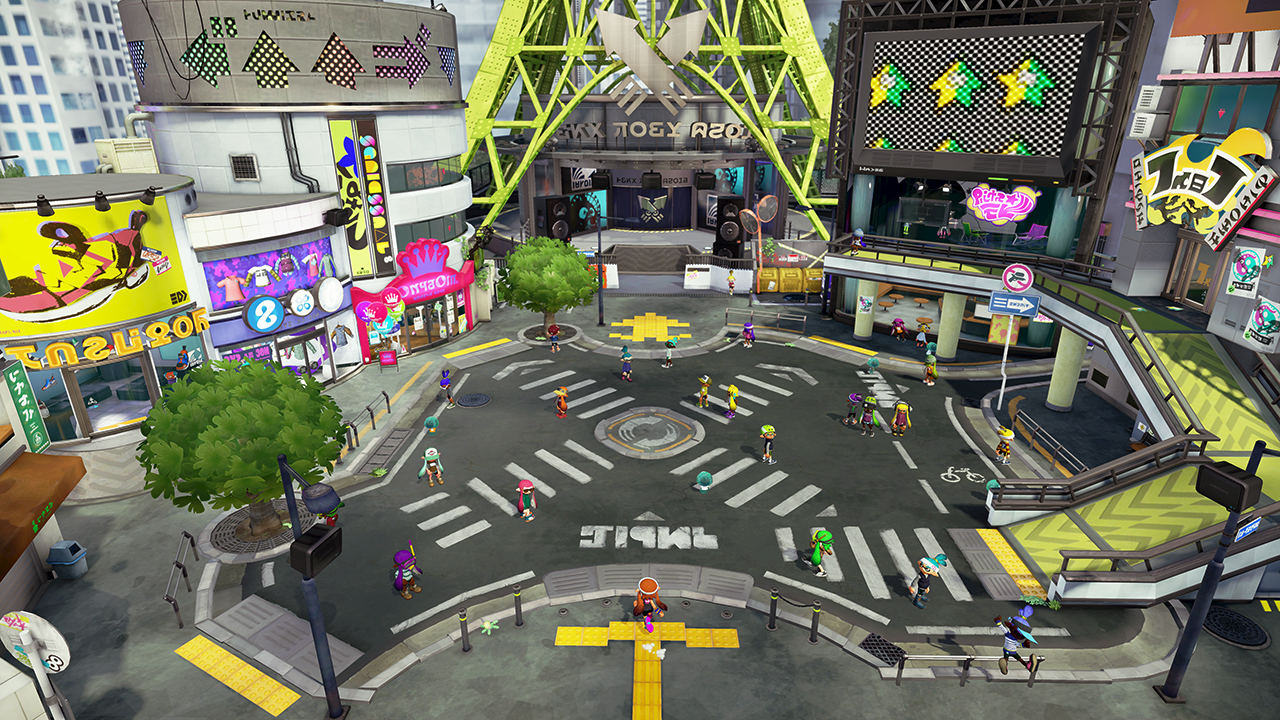
Modeled after the Shibuya 109 crossing in Japan, Inkopolis Plaza keeps almost everything the player needs right in line of sight as soon as the player logs in. All three shops are to the left in a nice row (and you never need to go back out into the plaza to get between shops), while the main lobby is straight ahead. The slightly less important features are to the right, and while they might not be immediately visible, the player doesn't need to go there until after quite a bit of play. At that point, they've probably already stumbled upon it on their own. Tertiary features, like amiibo support, are kept behind the player, so as to not be in the way.
Everything in Inkopolis Plaza is in a big ring around the center where other players mingle. This circular design is effective because it's easy to remember where points of interest are along the outside ring. Another game that uses the circular design in this way is Super Mario Galaxy.
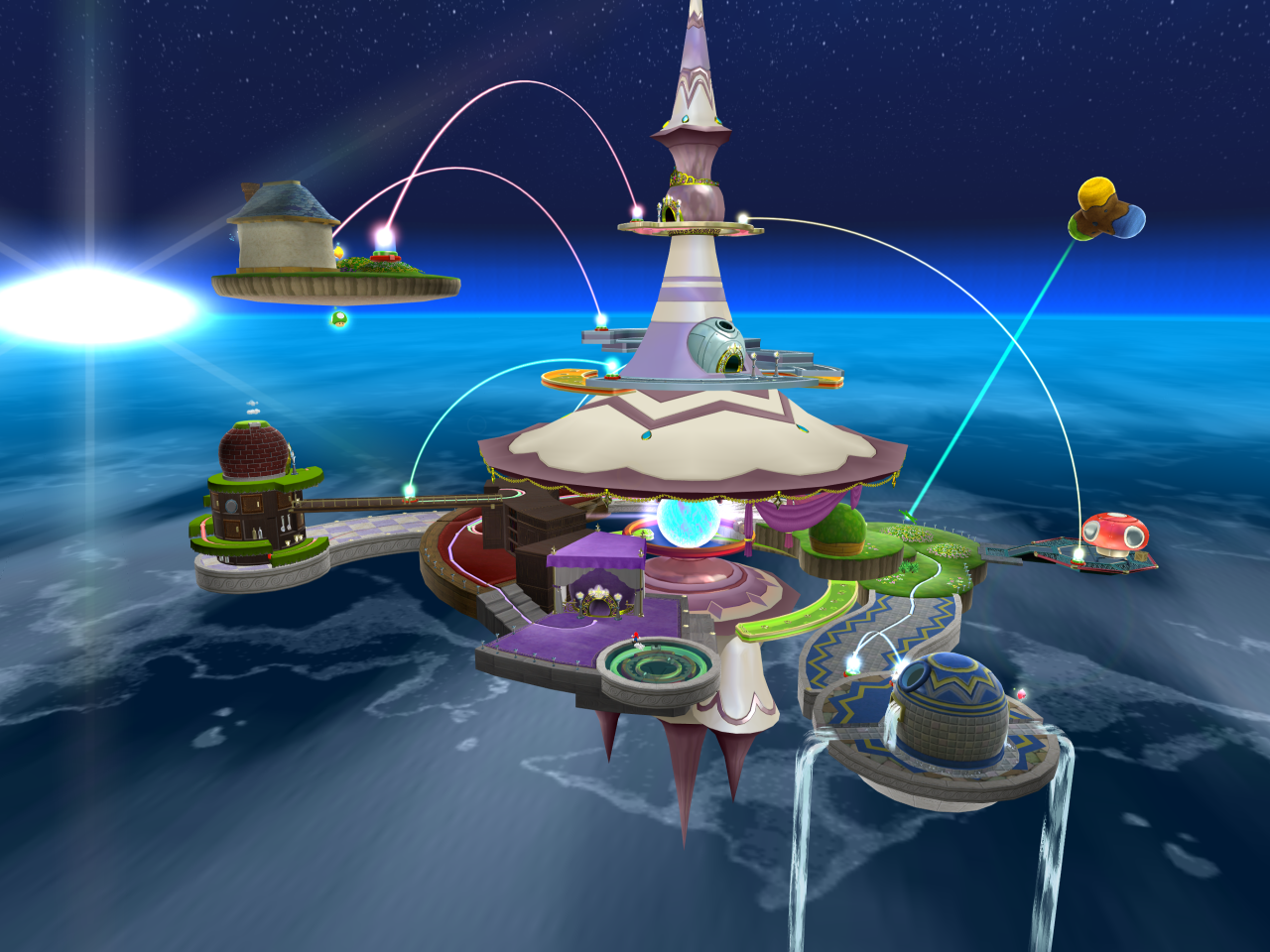
The Comet Observatory uses a set of concentric rings with some spokes leading outside of the circles. Of course, the Comet Observatory is very different from Inkopolis in a few ways. For one, most of the Observatory isn't accessible from the get-go. Parts of it unlock as the game progresses, so the developers can get away with having a slightly more complex design. The Observatory also has a very satisfying sense of progression as you go through the game; you continue to climb up and up, lighting up more of the world as you collect more stars. You also unlock ways to quickly navigate around the area later on in the game, so it never feels like a hassle to navigate the Observatory.
Now, how about games that completely break these rules? The most obvious one that comes to my mind is Sonic the Hedgehog (2006)'s Soleanna. Not only is it not designed in a circular manner (though that's by no means mandatory), it's huge. So big, in fact, that it's divided into three areas with loading screens between them. There's all this unnecessary clutter in it too, meaningless streets, a bunch of water you can't swim in, and lifeless NPCs without much interesting to say. Most of this space is to accommodate the myriad challenges dotted throughout the city. Take note: the best hub worlds are clean and without clutter. Keep it small, keep it simple.
But OK, it's pretty easy to pick on Sonic '06, so I'll take a jab at a game I actually like: No More Heroes. While one could argue that Santa Destroy isn't a hub world, it is the place you return to after every ranked battle, and a lot of the game takes place there. It has many of the same issues that Soleanna has, but king in why Santa Destroy isn't fun to be in is the fact that it feels like a ghost town. The NPCs don't talk to you, you can hardly affect anything in the environment, but mostly it's just boring to drive around in. Don't even get me started on how awkwardly the motorcycle handles on these thin streets.
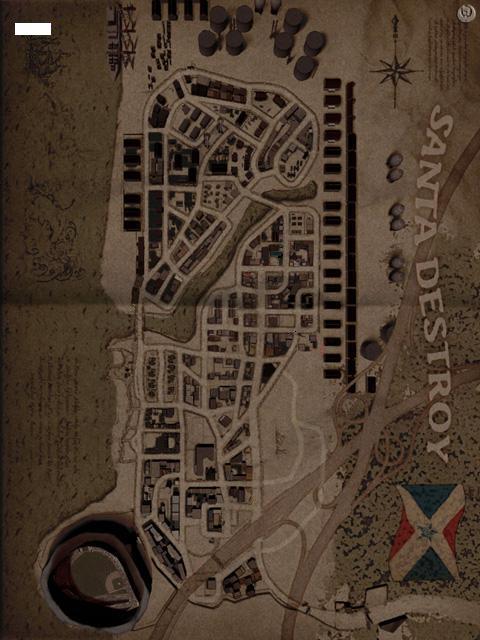
And again, this whole world was built to enable a bunch of minigames and little challenges dotted all over the map. That image might make it look like Santa Destroy isn't that big, but it feels so much bigger when you have to drive through it all game. Again, keep the hub world relatively small, or at least segment it so that it's easy to navigate.
Center of the World
So now that you've got the functionality of your hub world down, what about the form? Hub worlds should be the most memorable place in the game, and not just because the player walks through it all day. Of course, good visual design plays
a pretty big role here, but there are other ways to make a hub world memorable. One feature you could incorporate would be 'interconnection'.

What do I mean by 'interconnection'? I'm talking about the idea that the hub world is actually part of the world. Delfino Plaza from Super Mario Sunshine is an incredibly connected hub world. From Delfino Plaza, you can see other worlds, and this is true of the worlds themselves. This helps to make the hub world (and by extension, the other levels) feel like real places. Sunshine's hub world is in stark contrast to Super Mario 64's Peach Castle. Not only are the worlds completely disconnected from the castle due to the way you enter them, but there's no sense of interconnection between the levels either. This is partly due to the limitations of the Nintendo 64, but Banjo Kazooie was able to achieve a slightly better level of interconnection because of its premise. Grunty's Lair is that of a mad witch; the craziness that occurs within and the means of travel between worlds is slightly more justified when you take into account what kind of character Grunty is.
Some people may not care about how connected the worlds are. That's fine, because we have other means of making the hub world memorable. You could populate the world with interesting and colorful characters. Remember earlier when I said one of the main killers for both Soleanna and Santa Destroy was how they felt lifeless? That's because little to no effort was put into making those places feel like living, breathing societies. When I think of a hub full of colorful characters, I think Rogueport from Paper Mario: The Thousand-Year Door.
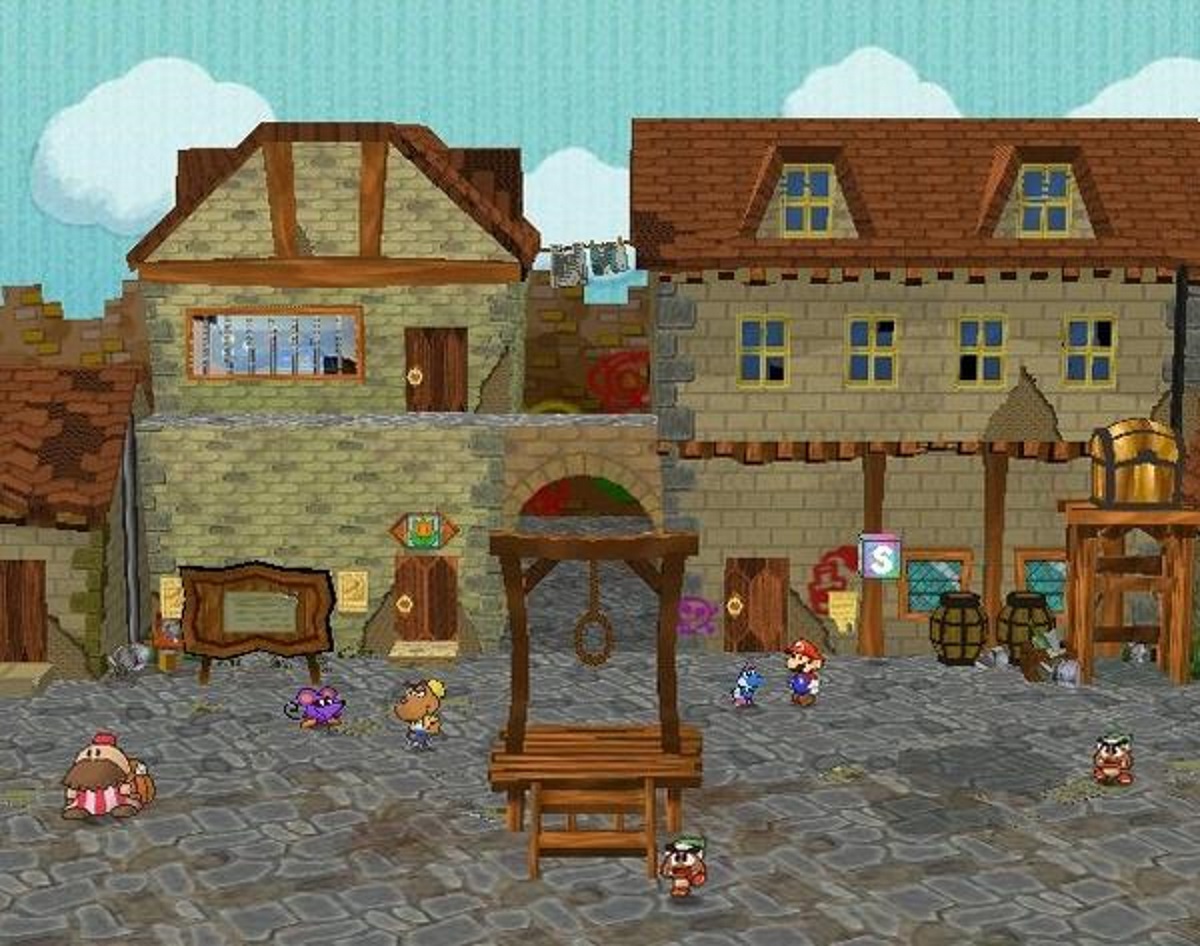
Rogueport is a hive of scum and villainy unlike any other seen in a Mario game before this one. It's got ruthless thugs, bumbling goons, a knock-off Mafia, and lots of interesting and funny dialogue coming out of each one of them. Being an RPG, you're already kind of incentivized to talk to every NPC you come across in case they're carrying hints. When they don't have a hint, it's a nice consolation to get a funny line out of them. Rogueport also demonstrates a bit of that connectedness we were just talking about, with a blimp and train to take you to different chapters. That kind of thing helps spice up not only the hub world, but the area that you're going to as well.
Home Away From Home
By the way, no one is stopping you from having multiple hub worlds. Sometimes it's more effective to have a few different, smaller hubs than it is to have one large hub. The Pokemon games do this in nearly all of their main series regions.
For instance, the Sinnoh region has three big cities: Jubilife City, Hearthome City, and Veilstone City.
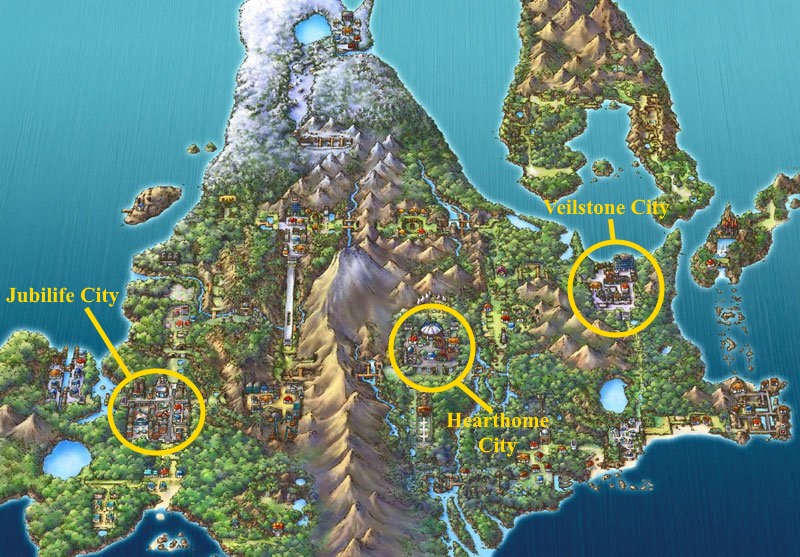
Each of them has the makings of a hub world, as well as some feature that makes them unique. Jubilife City has the Global Trade Station, Hearthome City has the Contest Hall and Amity Square, and Veilstone City has the Department Store and the Game Corner. Though these cities are not hubs in the traditional sense, they can have the same feel and function, primarily in that reaching one of these cities and using the Pokemon Center creates a nice exit point.
Super Mario 64's hub world is a bit like this as well. The foyer acts as the first hub, and the basement can't be accessed until completing the Bowser level. Once you've completed all the worlds in the foyer, there really isn't too much reason to go back other than for travel purposes. The basement then becomes your second hub, and this repeats with the upper floors as well. This works really well because it gives a great sense of progression for the player, and it helps to make the hubs feel less like a series of terminals along a ring and more like a real place.
Home Is Where The Hub Is
If you're planning on developing a game that utilizes the "worlds" structure as seen in the Mario franchise, give a consideration to creating a hub world rather than a level select screen. I personally feel that a hub world really brings
a sense of unity to a game. It can be a place to develop the culture of a world, or a stage for which much of a game's story is played out. Whether you're constructing a hub like a base of operations or building something more akin to a
cozy village, remember to keep in mind the ideas I've talked about above. But most of all, remember to create with both your heart and your mind.
